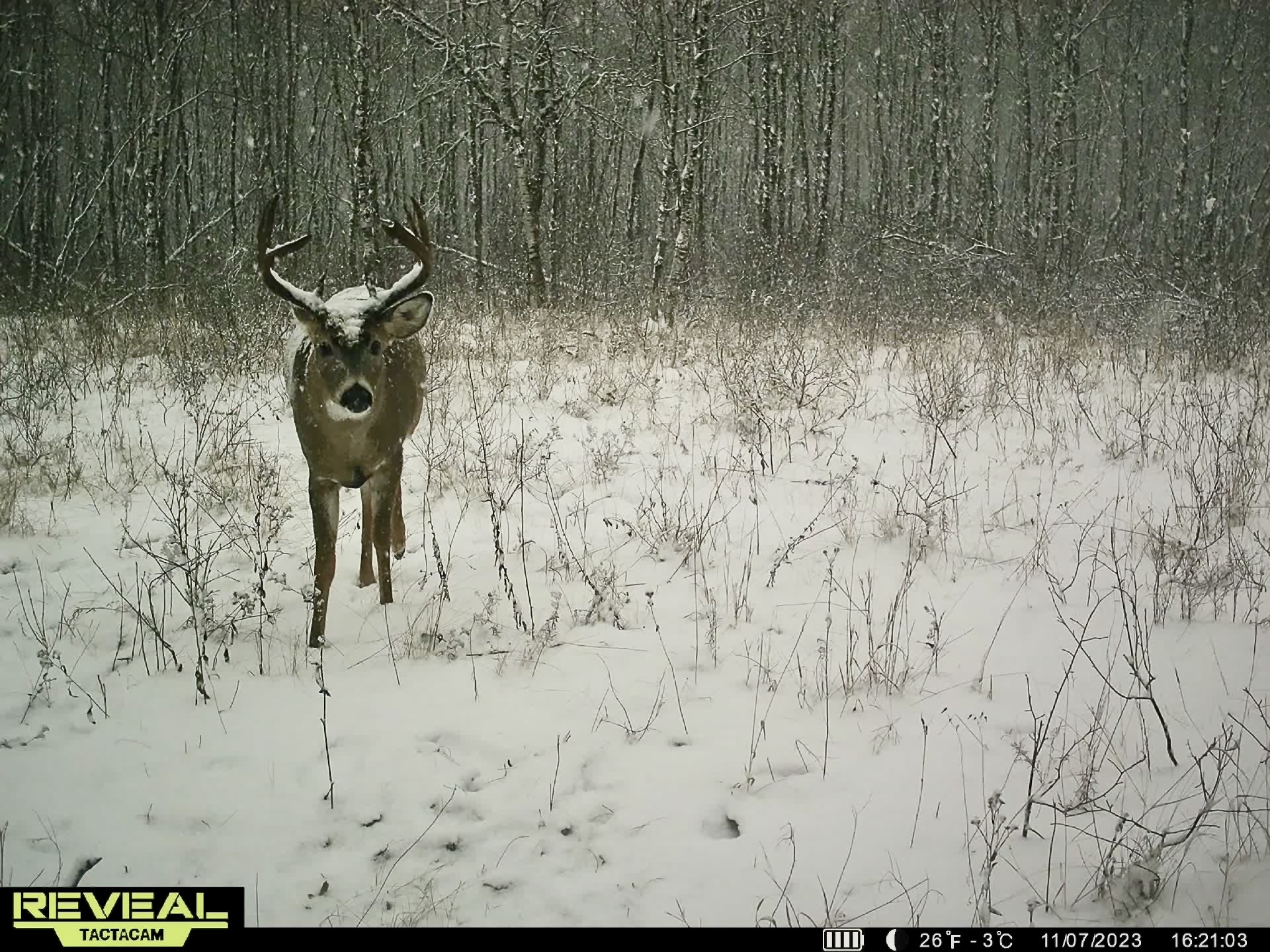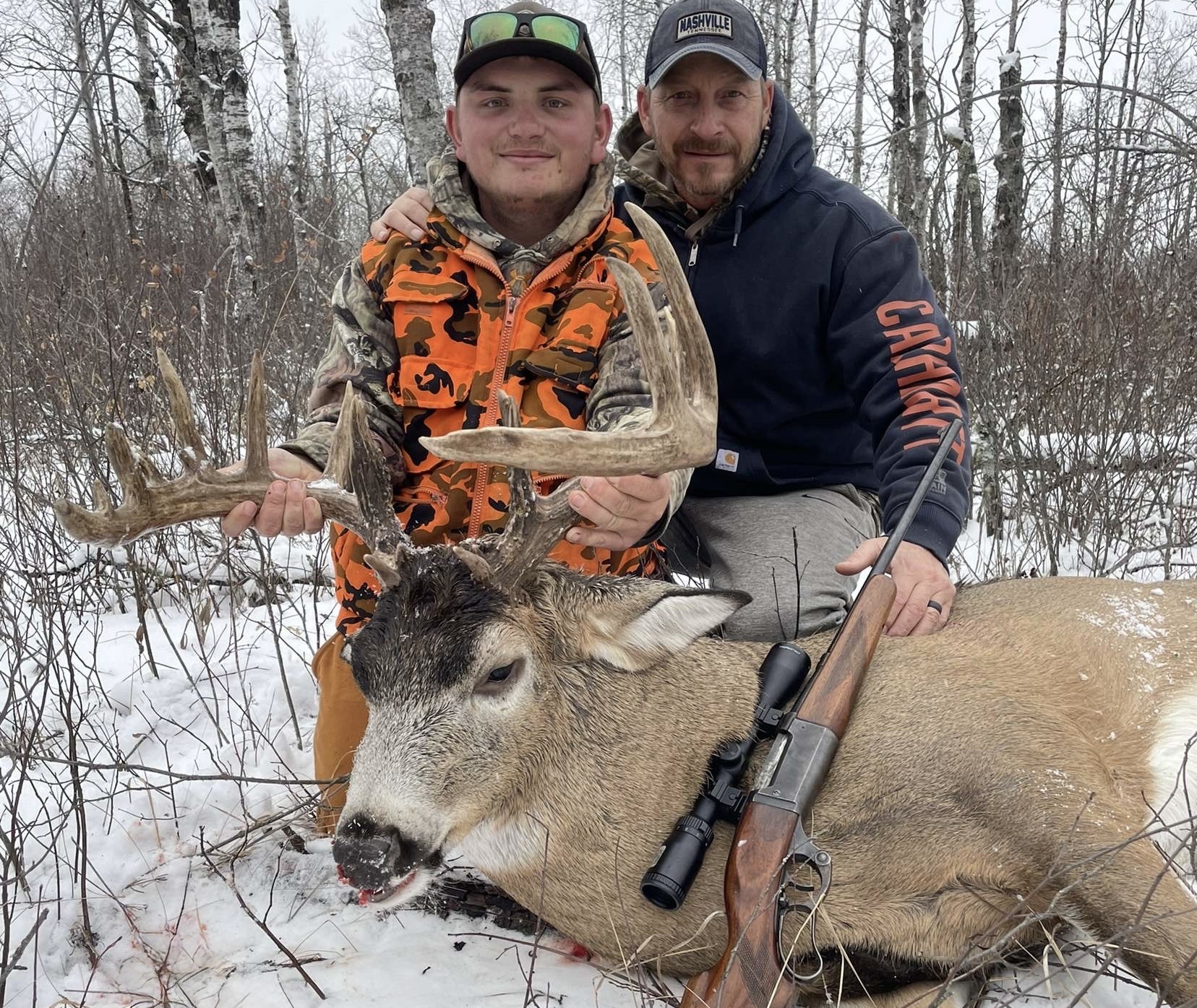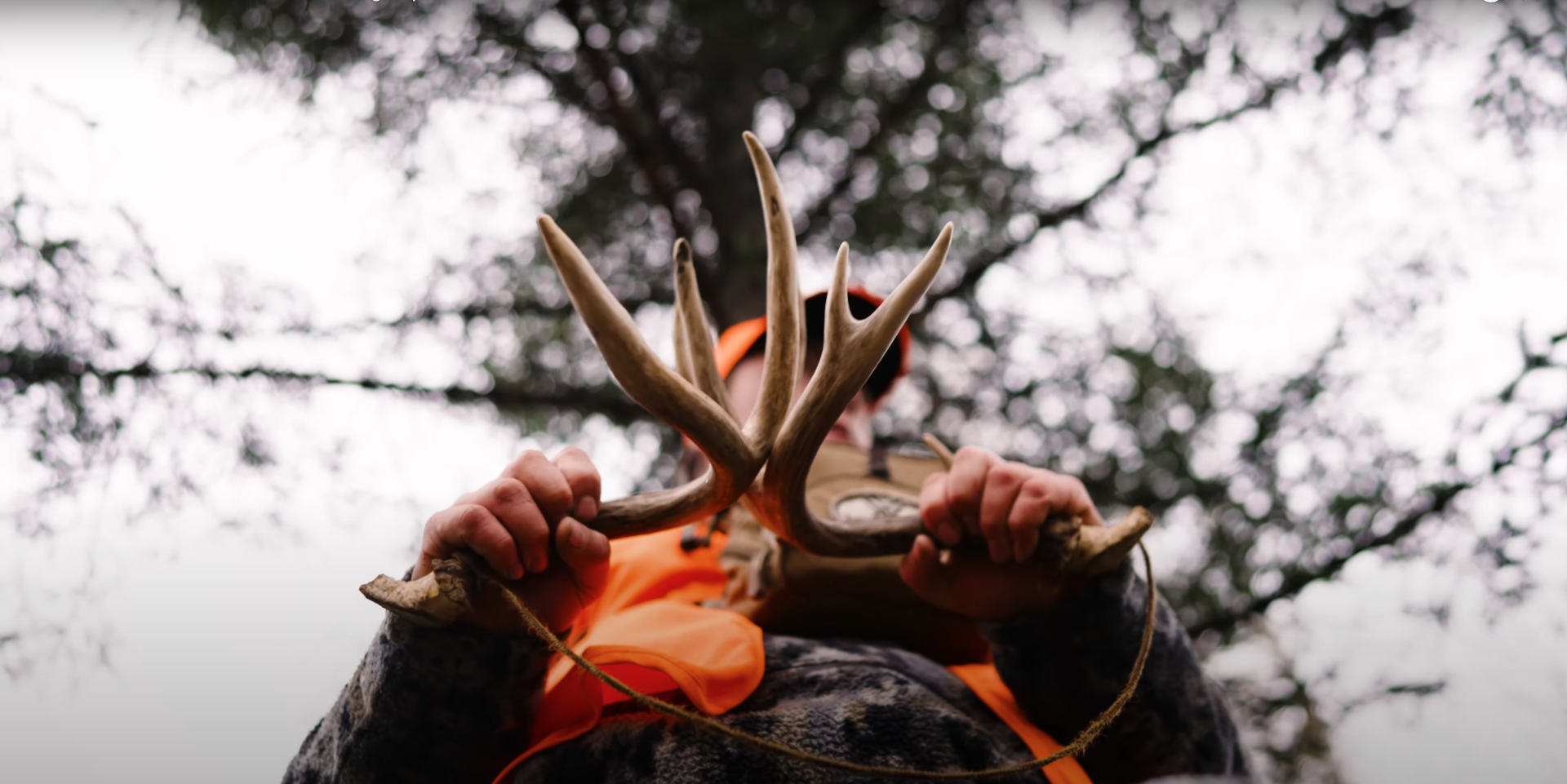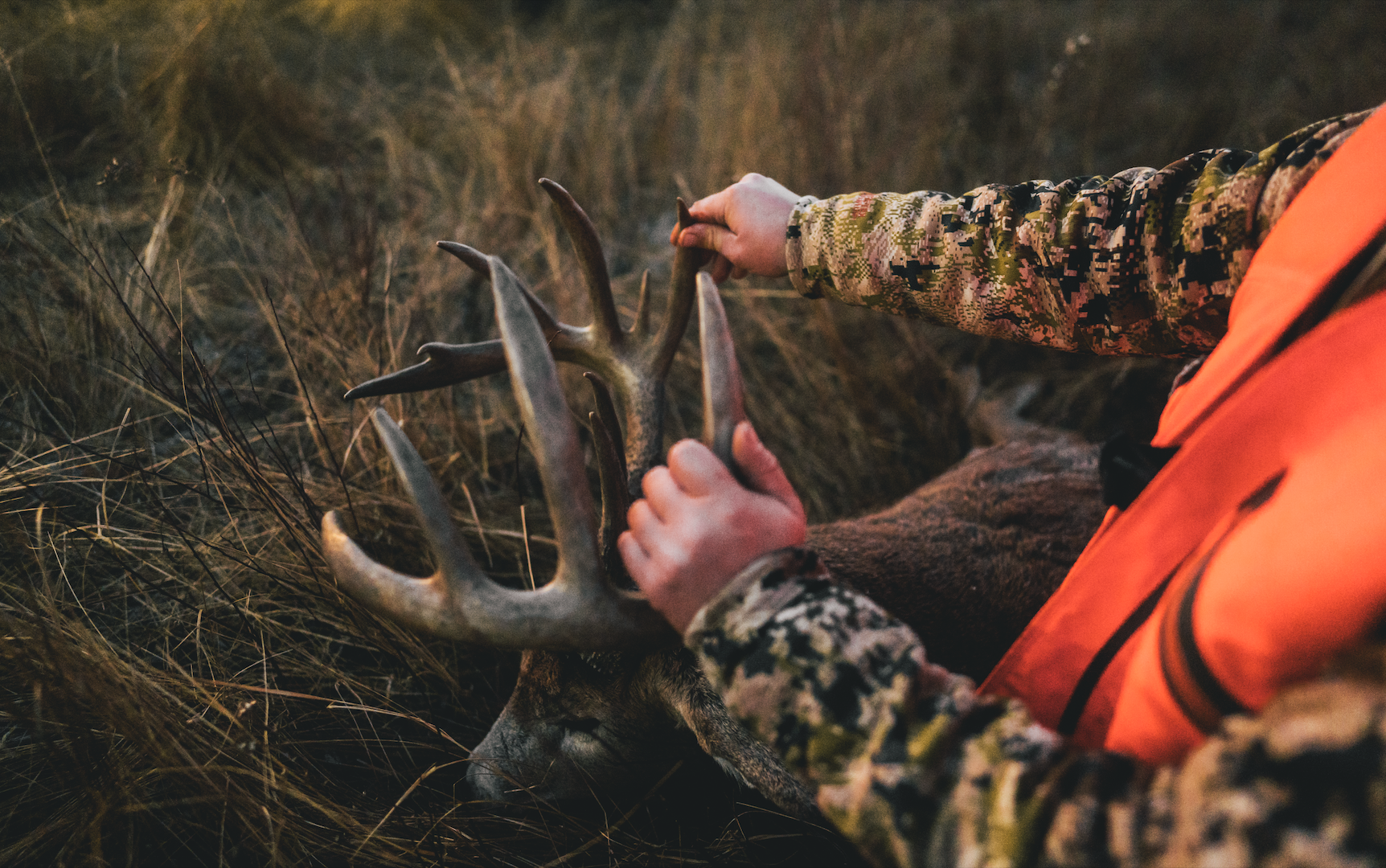How To Hunt the Rut in Manitoba: Rifle Season Whitetail Tips
Rifle whitetail season lands right in the heart of the rut in Manitoba, when bucks are running wild and daylight encounters become far more common. Deer movement surges, the woods feel alive, and every sit holds the potential for a heavy antlered buck to appear without warning. It is the most electric stretch of the entire deer season, and many hunters look forward to it all year.
With that excitement comes unpredictability. Bucks can show up from any direction, change patterns overnight, and chase does through the thickest cover. Staying focused, adapting fast, and playing smart increases your chances when the action heats up.

Rifle season generally opens across Manitoba on November 10th and runs for the following three weeks, ending on November 30th. Whitetails are found province-wide, from as far north as The Pas, through the Parkland and Western Region, across the Central and Interlake Region, and deep into the southern portions of the Eastern Region, like the Sandilands, Whiteshell, and Nopiming Provincial Parks. Before heading into any of these areas, review the Manitoba Hunting Guide to ensure you are up to date on all regulations for your specific area and aware of exact season dates where you plan to hunt.
Now that you are familiar with where whitetails live across Manitoba and have brushed up on the rules and regulations for your chosen area, it is time to take advantage of the heart of the rut. Here are five proven rifle season tactics to help you make the most of this fast-paced time of year.
1. Focus on the does, they set the stage
During the rut, bucks stop prioritizing their own food and bedding routines, they key on does. If you are seeing fields full of does or consistent doe activity on camera, that is exactly where you want to be. Does are not searching for bucks during this window; they keep to their normal feeding and bedding patterns, and the bucks travel to them. Setting up where doe groups reliably feed or stage gives you the highest odds that a cruising buck will swing through to check them.

Weather can nudge timing. A cold front drops temperatures, deer burn more energy to stay warm, and they often rise earlier to feed. The back side of a storm can clear the air, stabilize wind, and create a calm, high-visibility period that encourages daylight movement. In both cases, bucks already motivated by breeding will cover more ground, which increases your chance of seeing one step into the open before dark. When you know a front is approaching, be prepared to sit earlier and for a longer period.

If your cameras show bucks hitting fields mostly after legal light, or only in the middle of the night, do not panic. That pattern simply tells you they are staging in nearby cover and being cautious about entering the open. In those situations, keep capitalizing on doe concentrations, then be prepared to shift closer to the cover they use to approach. We will get into how to make that move in Tip 2.
2. Hunt the travel corridors between bedding and food
If your cameras are showing bucks arriving in the fields only after legal light, or mostly during the night, it means they are staging in cover before entering the open area. That is your cue to move closer to the routes they travel between where they bed and where they feed. Bucks often follow the exact same pinch points, edges, and treelines that the does use every day, so focusing on these travel corridors keeps you right in the path of rut movement.

Trail cameras are a huge tool here. If you have multiple corridors identified, use cameras to determine which ones consistently receive the most activity and in which direction deer travel at different times of day. Corridors with fresh doe trails usually attract the most buck attention. Only slip into these setups when the wind is safe and not blowing toward the bedding area. The goal is to stay undetected in areas where deer feel comfortable moving during daylight.

Snow makes this style of hunting even more effective. Fresh tracks can tell you almost everything you need to know about what is happening in the woods without a single camera picture. A big buck track is usually noticeably wider and deeper than a doe's tracks, and the spacing between strides can hint at the size of the deer that made it. Notice how much snow is visible inside the print and how crisp the edges are. If the sun has melted the edges, or if new snow has filled the track, you can estimate how long ago the deer passed through. Even when there is no snow, mud can reveal a lot of the same clues if you pay close attention.

Along these same routes, bucks often leave behind scrape lines that connect their bedding areas to food sources. Fresh scrapes, new rubs, and well-worn trails are good confirmation that you are close to the action. Hunting these areas is one of the most exciting ways to experience the rut. Encounters often occur at close range, with bucks cruising on a mission, their noses to the wind, as they search for does. When they come through, you are right where they want to be.
3. Use calling and rattling with purpose
Calling during the rut can take a hunt from quiet to chaotic in a heartbeat. Bucks are fired up, competing for does, and reacting to sounds that suggest breeding opportunity or challenge. The key is understanding what each sound means and when to use it.
A doe's bleat mimics simple communication among does. It tells any buck nearby that a potential mate is close. Fawn bleats are higher-pitched and can draw does in, and sometimes that brings a buck with them. These are soft sounds, so they are best used when deer are within a couple of hundred yards or in thicker cover.

A buck grunt imitates a trailing buck that has found a doe. It is one of the most reliable calls during rifle season. Bucks hear it and want to check if there is a doe, or if the other buck is worth pushing around. A snort wheeze is a more aggressive challenge, often used when you can see a buck that is already fired up or showing dominance. This call can seal the deal when a buck is sizing up the situation at a distance.

Rattling simulates two bucks sparring for breeding rights. During the early phases of the rut, bucks spar more than fight, so lighter tickling is realistic. When the breeding is hot, harder and louder rattling can trigger a dominant buck to charge in. Rattling has been effective in open fields, but many hunters, including myself, find it most productive along travel corridors near scrape lines, where bucks feel comfortable moving during daylight. These areas already smell like deer and carry natural sounds, so rattling can feel much more believable in that environment.

Calling during the rut is not guaranteed. Some deer may ignore you, others may circle downwind, and sometimes you will call with no visible response at all. But mixing calling into a sit can be the difference between a buck slipping by out of view or stepping into your shooting lane. You are creating one more reason for a curious or territorial buck to come investigate.

When the rut is in full swing, calling can be effective throughout the day. Bucks are constantly on their feet and ready to react, which naturally leads to the next tip about staying in the game through the midday hours when many hunters climb down.
4. Stay in the game through the midday
Once peak breeding behaviour hits, mature bucks spend very little time resting. Their priority becomes finding and tending receptive does, and that keeps them on their feet far longer than usual. This constant search means that even as the sun climbs high and many hunters head home, bucks continue to move. Midday is no longer a lull; it becomes a prime opportunity.

There is a reason so many hunters swear by the saying that you must hunt from 10 am to 2 pm during the rut. By late morning, does are often already heading toward bedding areas. Bucks do not stop just because the does slowed down. They stay active, trying to cut the fresh tracks or scent of a doe that is close to coming into heat. This focused searching creates some of the most surprising daylight encounters, especially near thicker cover where deer feel safe during the brightest part of the day.

Calling can be especially effective during this stretch. With bucks still searching and impatience rising, a grunt, short rattle sequence, or bleat gives them something specific to investigate. When they hear deer activity, they want to be part of it. Mixing calling into a midday sit keeps you in the game and increases the odds of pulling a cruising buck into view rather than letting him slip by unseen.
Keep a close eye on the does in the area. If you see a doe or group move toward bedding, do not take your eyes off where they crossed. Many times, a buck is shadowing just out of sight. If he is not, another buck may pick up that exact trail shortly after. That is a perfect moment for an impromptu setup. Move quickly but quietly, get the wind right, and use natural cover to hide along the path those does just took. Then wait. The buck that comes behind them might be the one you have been after all season.

Travel corridors and scrape lines remain great places to invest time during midday. Bucks feel comfortable moving there, the cover is thicker, and the sign is easier to follow. Fields and field edges usually see less midday use, but they are not a bad choice in the rut. Bucks will often swing through quickly to look for fresh doe tracks leading out of the field. If they cut a hot one, they can be gone in a matter of seconds. Staying alert and ready is key because daylight bucks can appear and disappear fast.

A lot of hunters, myself included, have watched midday be the time when mature bucks finally show up. Most hunters leave, but the bucks do not stop. Staying in the stand when others take a break keeps you hunting while the rut is still very much on.
5. Be ready to adapt quickly
The rut is one of the most unpredictable times of the season. Bucks change priorities fast, and patterns can shift overnight when a new doe comes into heat, when hunting pressure rises, or when a dominant buck moves into the area. Staying flexible is the key to staying on deer.

One of the biggest reasons for sudden quiet spells is the phase known as lockdown. When a mature buck finds a receptive doe, he sticks to her and rarely leaves her side. They slip into thicker cover where she feels secure and may barely move for a day or two. Cameras go quiet, field activity slows down, and hunters wonder where the deer went. If the buck you are targeting disappears for a short stretch, it often means he is with a doe close by and will be back on his feet as soon as she is bred.

When sign points to deer still being in the area, staying patient and adjusting subtly can go a long way. Fresh doe tracks, newly opened scrapes, or multiple trails funnelling through the same patch of cover are all signals that the deer are nearby. This is when shifting slightly downwind of the heaviest sign, keeping yourself tight to the cover, and mixing in a few well-timed calling sequences gives you a strong chance of catching that buck when he starts cruising again.

On the other hand, if you have been sitting in the same field for days and the action has gone stale, it may be time to change the picture. That can be a sign that the real rutting activity is happening back in the travel corridors and staging zones. When fields cool off, that is your cue to move toward where those does are travelling between bed and feed, and where the bucks are likely scent checking their trails. Those are the spots to trust when things shift fast.

Everything during the rut can change in a heartbeat. The hunters who read the sign, respond to the movement, and make smart adjustments are often the ones who find themselves suddenly staring at a mature buck that showed up right when the plan shifted.
Stay Sharp, Stay Patient, Stay Ready
Rifle season falls during the most thrilling and unpredictable weeks of deer hunting in Manitoba. Bucks are running hard, patterns shift fast, and the line between a quiet sit and a heart-pounding encounter can blur in seconds. The hunters who pay attention to the does, watch the signs, adjust to the movement, and stay in the fight throughout the entire day give themselves the best chance of crossing paths with a mature buck in daylight.

No matter where in the province you hunt, these rifle season rut tactics keep you aligned with the behaviour that drives whitetail movement at this time of year. Trust what the woods show you, be prepared to adjust your plan, and always remain vigilant. When the rut is at its peak, your moment can arrive without warning.
Good luck to everyone heading out this November. Stay safe, have fun, and make the most of Manitoba’s greatest whitetail show of the year.

To Learn more about whitetail deer hunting in Manitoba, check out our Big Game Hunting page.
Additionally, explore our other whitetail blogs below for further insights and advice.





